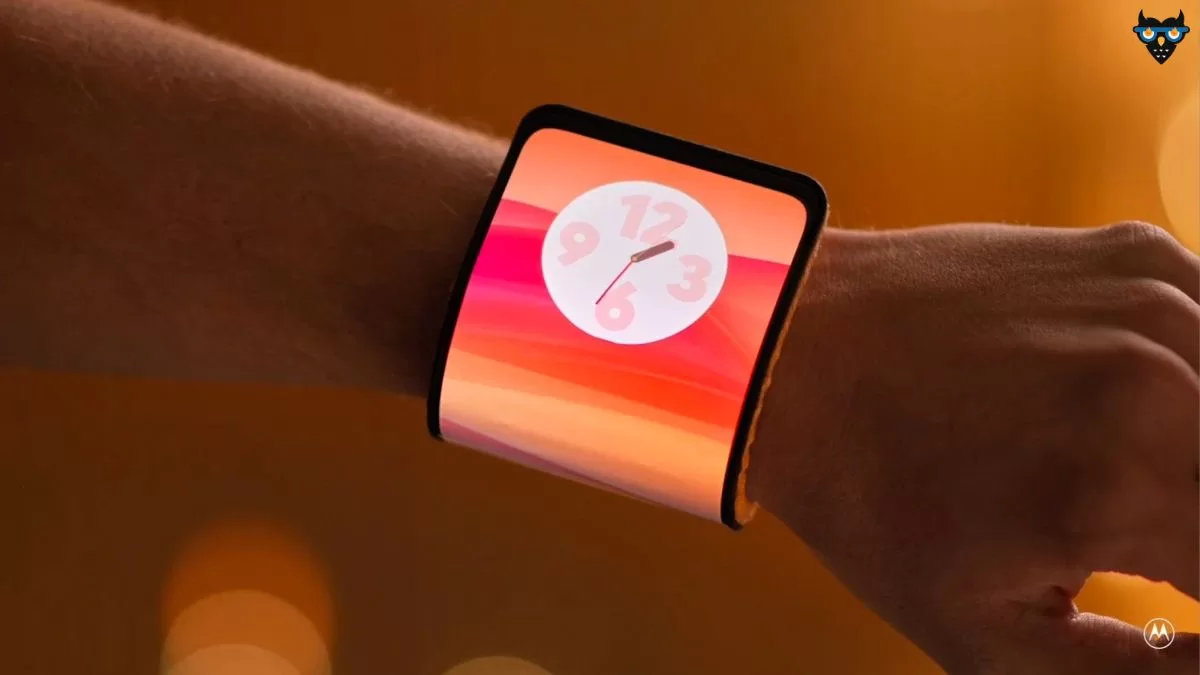Motorola’s Vision for a Wearable Smartphone: Unveiling the Future of Mobile Technology

The smartphone industry is no stranger to innovation, with companies continuously striving to outdo one another in a never-ending race to redefine the user experience. In this fast-paced environment, Motorola has stepped into the spotlight with a groundbreaking concept that combines a flexible, adaptable display with cutting-edge AI features. This concept has the potential to reshape the way we interact with our smartphones, making them not just communication devices but personal companions that adapt to our lifestyles. In this blog, we’ll delve deeper into this exciting innovation and explore the possibilities it holds.
The Bendy Phone with FHD+ pOLED Display:
Motorola’s latest revelation centers around a bendable phone featuring a Full High Definition Plus (FHD+) plastic OLED (pOLED) display. What sets this concept apart is its incredible adaptability, giving users the power to physically bend and shape the display to fit their unique needs.
The magic happens when the device seamlessly transitions between different forms. When laid flat, you’ll enjoy a standard Android phone experience with a generous 6.9-inch display. This means you can indulge in all your favorite apps, watch videos, or browse the web just as you would on any high-end Android device.
However, the true magic unfolds when you decide to don it as a wrist accessory. Wrapping the flexible display around your wrist creates a wearable experience like no other. It’s almost as if your smartphone has evolved into a smartwatch, ensuring that you stay connected and informed while keeping your hands free.
The adaptability doesn’t stop there. The device can also be positioned in various stand modes, offering different viewing angles to suit your needs. If you require a more compact form factor, you can stand the device upright, resulting in a 4.6-inch display. This mode is perfect for those on the move, allowing you to enjoy a full Android experience without the bulk of a larger device.
AI Features That Elevate Your Smartphone Experience:
The flexible display is just the tip of the iceberg. Motorola has also integrated a suite of AI features that promise to enhance your smartphone experience. The standout feature in this arsenal is a generative AI model that operates directly on the device. This AI innovation allows you to extend your personal style to your phone.
Simply upload or capture a picture of your outfit, and watch the magic unfold as the AI generates multiple unique images that can be used as custom wallpapers on your device. Your smartphone can now effortlessly match your style and mood, ensuring that it’s not just a tool but an extension of your identity.
But that’s not all. Motorola’s AI concepts extend to practical and productivity-enhancing features. Have you ever wished for a simple way to blur out sensitive information on your screen? Motorola’s AI can do that with ease, ensuring your privacy and security are paramount.
Additionally, dealing with crinkled receipts or disorganized documents can be a thing of the past. The AI can transform these into clean, legible documents, simplifying your financial record-keeping and reducing the headache of managing paper clutter. Furthermore, the AI can summarize notes, emails, and chat conversations, helping you stay organized and saving you valuable time.
MotoAI Personal Assistant:
In an era where virtual assistants are becoming an integral part of our lives, Lenovo, the parent company of Motorola, is unveiling a brand-new MotoAI personal assistant specifically designed for Motorola smartphones. While detailed information about this assistant is still under wraps, it’s evident that Lenovo is committed to enhancing the overall user experience by providing a highly capable and intuitive virtual companion.
Conclusion:
While the future of Motorola’s adaptive display concept remains uncertain, it’s clear that the company is at the forefront of the foldable smartphone game. With a bendable phone that adapts to your needs and a set of AI features that personalize, protect, and streamline your smartphone experience, Motorola is demonstrating its unwavering commitment to innovation and the pursuit of excellence. Keep a keen eye on the updates from Motorola, as they continue to redefine the boundaries of what’s possible in the world of smartphones. The future of mobile technology looks more exciting than ever.
Frequently Asked Questions (FAQs)
1. What is the key feature of Motorola’s bendable phone concept?
The standout feature is its adaptable display, which can be bent and shaped to suit various forms and uses, transitioning from a standard Android phone experience to a wrist-worn wearable and other stand modes.
2. How does the generative AI model work for custom wallpapers?
You can upload or capture a picture of your outfit, and the AI generates multiple unique images that can be used as custom wallpapers on your device, allowing your smartphone to match your style and mood effortlessly.
3. What productivity-enhancing AI features does Motorola offer?
Motorola’s AI can blur sensitive information, transform crinkled receipts into neat documents, and summarize notes, emails, and chat conversations, making your daily tasks more efficient.
4. Can I look forward to the MotoAI personal assistant by Lenovo for Motorola smartphones?
Yes, Lenovo has revealed a MotoAI personal assistant tailor-made for Motorola smartphones, although specific details about its capabilities are yet to be unveiled.
5. Is the bendable phone concept from Motorola available for purchase?
As of now, it’s a concept, and its availability as a commercial product is still uncertain. Motorola is continuing to explore its potential in the market.
Also Read: Qualcomm Unveils Snapdragon 8 Gen 3 Chipset: A Game Changer in Mobile Technology
Also Read: Google Photos Now Automatically Backing Up RAW Images: What You Need to Know